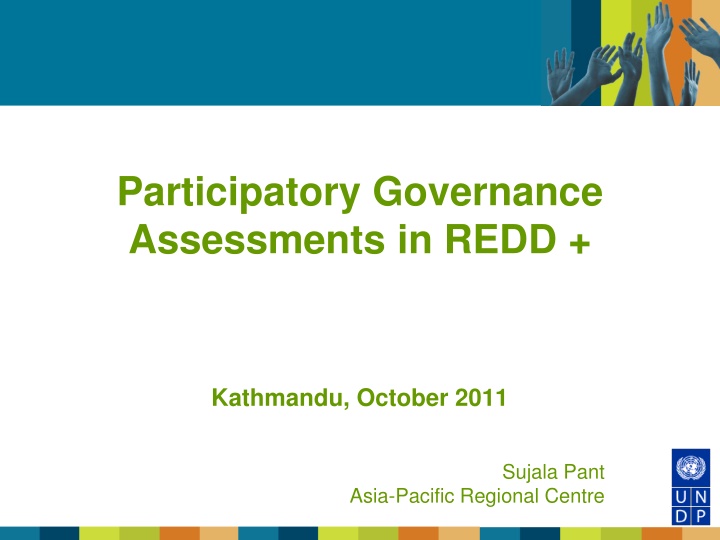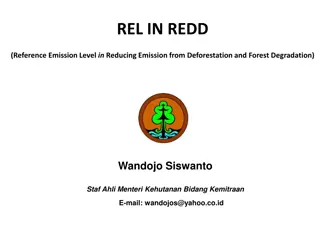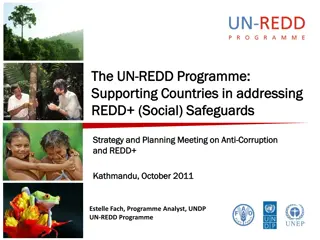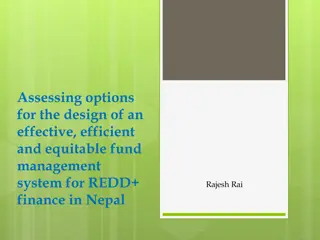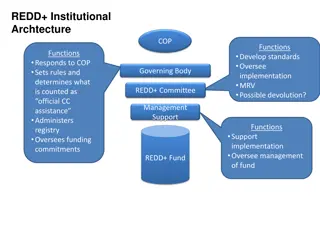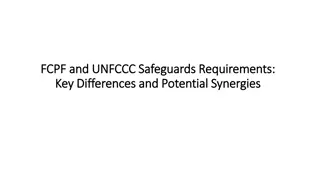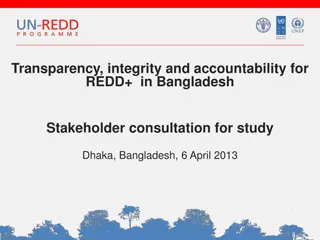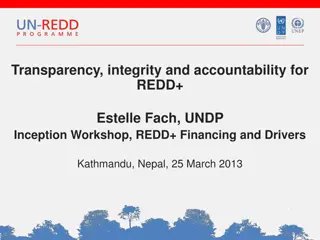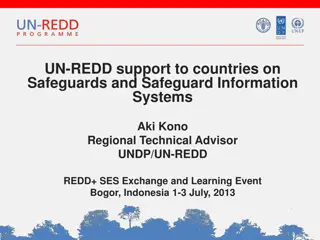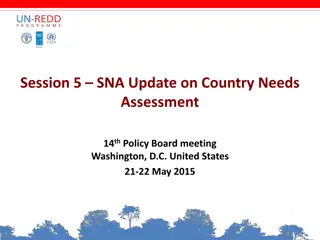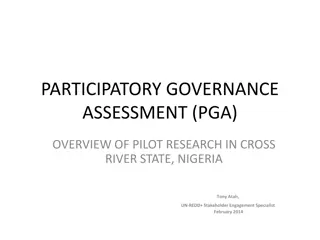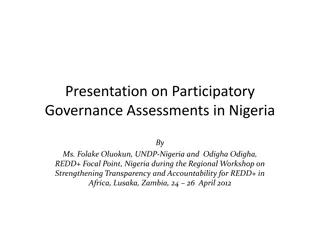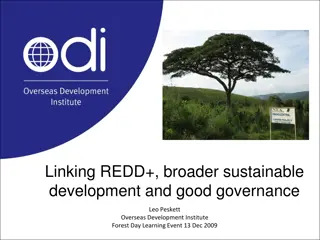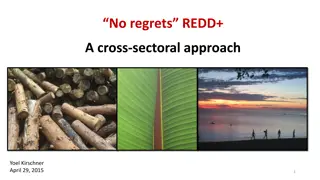Participatory Governance Assessments in REDD+ and Global Democratic Governance Programmes
This content explores the concept of Participatory Governance Assessments (PGA) in the context of REDD+ initiatives, highlighting its objectives, value-added benefits, typical processes, and alignment with other governance indicators. It delves into examples from different countries like Indonesia, Nigeria, and Viet Nam, demonstrating the importance of incorporating Anti-Corruption measures in participatory governance. Moreover, it discusses the Global Democratic Governance Assessment Programme and emphasizes the need to align governance indicators with various processes at local, national, and sectoral levels.
Download Presentation

Please find below an Image/Link to download the presentation.
The content on the website is provided AS IS for your information and personal use only. It may not be sold, licensed, or shared on other websites without obtaining consent from the author.If you encounter any issues during the download, it is possible that the publisher has removed the file from their server.
You are allowed to download the files provided on this website for personal or commercial use, subject to the condition that they are used lawfully. All files are the property of their respective owners.
The content on the website is provided AS IS for your information and personal use only. It may not be sold, licensed, or shared on other websites without obtaining consent from the author.
E N D
Presentation Transcript
Participatory Governance Assessments in REDD + Kathmandu, October 2011 Sujala Pant Asia-Pacific Regional Centre
Outline What is the PGA? What is the value-added? How has it been it been applied to REDD+? Examples of Indonesia, Nigeria, and Viet Nam Where does Anti-Corruption fit in the context of PGA?
What is the objective? Develop governance data that is measurable over time for internal accountability horizontal and vertical Process (inclusive and participatory) is as important as the outcome (data and baseline) Offers evidence base for national decision making (supply side) country contextualised and actionable indicators Critical accountability mechanism (demand side)
What is the value added of a PGA? Baseline and indicators on issues that are of importance to all stakeholders, as identified by those concerned Enables monitoring over time to measure progress, identify gaps, and improve policy making Availability of information enhances transparency and accountability
What is a typical process? Present and disseminate findings , after validation Agree on framework of key component s that will be assessed Identify stakeholder s (research group and advisory group) Define the scope (coverage) and methodolog ies Articulate purpose and objective of assessment Agree on data type and collection Analyse the data
Building on what we know Global Democratic Governance Assessment Programme (GAP) Examples from Bhutan, China, Indonesia, Mongolia, and Viet Nam (in Asia-Pacific)
Aligning governance indicators to other processes Local Governance & Ministries Sectors National Impact MDG Reports PRS/NDP Reports Outcomes Annual Sector Reports Outputs/ Activities Sector MIS Reports Ministerial Policy Statements Grants Reports Budget Reports Inputs/ Funds Local Governance Financial Statements
Why is a PGA relevant in REDD+ Address socio-economic drivers Enhance confidence in the REDD+ mechanism by making all relevant information available to all concerned stakeholders Experiences so far include: Indonesia Nigeria Viet Nam
The case of Indonesia Major objectives: Assess the existence of policies and enabling legal framework Assess the application of policies and regulations Assess capacity of all relevant institutions to implement and participate in REDD+, including the opportunities and challenges of forest dependent communities Examine governance structure at national and local levels .
The case of Nigeria Two stages identified: First phase: agree on the parametres of the PGA and how it will be undertaken Second phase: roll out of the methodology in Cross River State As a diagnostic tool, the PGA will assess: The existence of and implementation of policies and legislation The institutional capacity of relevant agencies to implement REDD + The existence and effectiveness of mechanisms for participation of forest dependent communities The existence and effectiveness of anti-corruption strategy The existence and implementation of the BDS
The case of Viet Nam Map existing forestry governance monitoring initiatives Present the broad framework of the PGA (with inputs from mapping) to key stakeholders with a number of options for entry points
Complementarity between PGA and Anti-Corruption Accountability and transparency are major objectives of the PGA, and AC measures are important to ensure this Going beyond misuse of funds to address issues such as: Biases in decision-making Ensuring access to information on all stages and facets of the REDD+ implementation to all concerned stakeholders PGA can be another entry point to address issues of corruption in sensitive contexts
